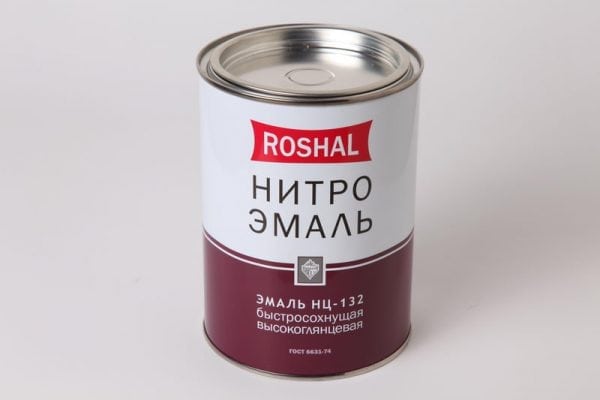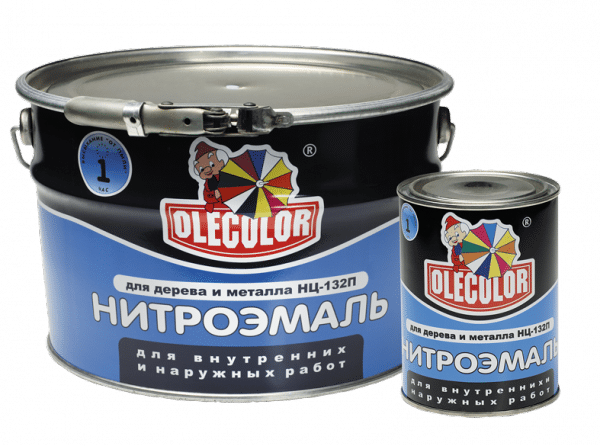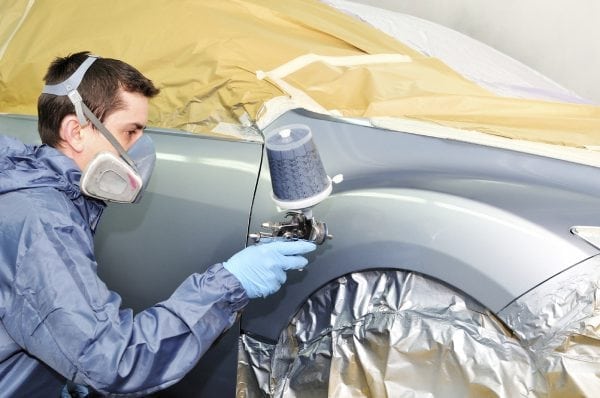Nitro enamels are a type of paints and varnishes made on the basis of cellulose nitrate. During the production process, cellulose is treated with nitric acid, which allows you to get the paint. Other names for the nitro-enamel composition are nitro-paint and nitrocellulose.
Nitro-paint is offered to the consumer in finished form. The product does not need a solvent. However, the paintwork material must be mixed well before use.
to contents ↑Fields of application
Nitro enamels were originally developed as a coloring composition for cars. The main reason for this purpose is glossy, spectacular mirror shine surface. However, the staining process was very labor intensive, and the coating was unstable: it lasted only 3-5 years. Therefore, in the industry, nitro-paint was gradually abandoned for painting automobile bodies, although motorists still use this type of paint at home.
Now nitro enamels are most often used for processing the following surface types:
- Metal. It can be either any building structure (railings, shelves, etc.), or the car body.
- Wood. Furniture items, wood panels, window sills, etc. are painted with nitro enamels.
- Walls covered with plaster.
to contents ↑Note! Especially for drawing inscriptions, paint is made in markers. The marker is a reservoir with a rigid tip (rod).
Advantages and disadvantages of nitrocellulose
The advantages of this type of paint include:
- Resistance to ultraviolet radiation. The coating does not fade over the years;
- Resistance to moisture.
- Quick drying. The standard period of time required to dry a painted surface is from 10 minutes to half an hour (at room temperature). No drying equipment is required.
- An opportunity to receive excellent esthetic characteristics of a covering.
- The paintwork is suitable for coloring a wide variety of materials, including wood, plaster, metal, concrete, etc.
- Possibility of use both outside and inside the building.
- Nitro enamels differ in reasonable prices.
It should be noted such disadvantages of nitrocellulose enamels:
- The main disadvantage of nitro enamels is the high level of toxicity. It is possible to work with this LKM only in a respirator. The room must have good air circulation. Due to the high content of toxins, nitrocellulose paints are limited in distribution or even banned.
- Fire hazard. Nitro paints must not be kept close to open flame sources.
- Nitro enamels are incompatible with oil, alkyd and acrylic coatings. In these cases, it will not be possible to provide sufficient adhesion.
- Lack of mechanical strength. The coating is easily cracked by mechanical stress.
- Whitish stains on the surface. Their cause is an increased level of humidity in the room. White spots appear due to evaporation of acetone and simultaneous cooling of the surface. If the room is operated in high humidity conditions, instead of acetone, it is recommended to use a less volatile type of solvent, for example, amyl acetate or butyl acetate. At the same time, in rooms that are too humid it is better to completely abandon the use of nitro-paints. The maximum permissible humidity in the room painted with this type of paint should not exceed 70%.
Painting instruction
Since nitro enamels dry for a short time, this fact has to be taken into account by painters who use spray guns rather than brushes or rollers when working with this type of paint. The fact is that only a spray gun or spray can provide a uniform surface when painting, but when working with another tool, there are streaks.
Note! On average, nitro paint consumption is 100-120 grams per square meter.
If paint is applied to a metal surface, the order of the work will be as follows:
- Grind the metal surface with sandpaper.
- We remove traces of oil and dirt from the surface. Degrease the metal with a solvent (white spirit, gasoline or acetone).
- When the surface is degreased, a primer coat is applied to the metal.
- Apply the first coat of paint to a dry surface. After a half-hour wait, apply the second. Again, wait for the layer to dry and paint the surface again. Layers should have approximately the same thickness.
- After painting, carefully wash the container with solvent.
Note! Nitro enamels give a glossy appearance to the surface: the coating will look almost mirrored. However, to get such an effect, the rough surface must be well prepared, bringing it to perfect smoothness.
Painting of wooden products is carried out in a similar way, but there are also differences:
- We clean the surface of wood oils and resins, as well as the old paint layer. To do this, use sandpaper, putty knife or chemical cleaning agents.
- Ground the wood with an antiseptic. This liquid is inexpensive, but its effectiveness is undeniable. An antiseptic not only protects wood from microorganisms and rot, but also improves the adhesive quality of the material.
- Apply nitro paint on an absolutely dry surface in several layers.
Nitro enamels are still in demand due to their affordability. However, the numerous shortcomings of nitro enamels and, first of all, their toxicity force many buyers to opt for more durable and environmentally friendly paints.







